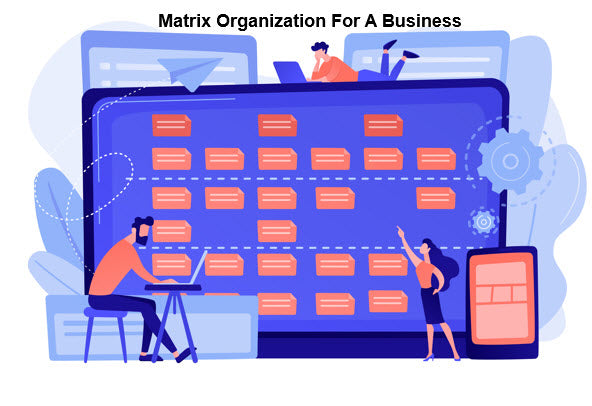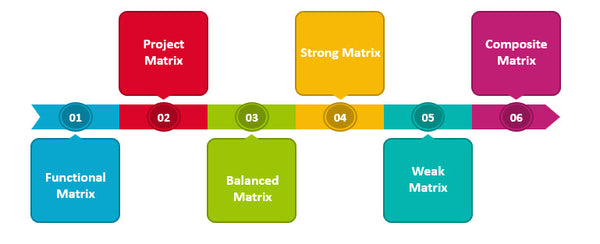An Introduction to Matrix Organization for a Business
A matrix organization is a type of organizational structure in which individuals are grouped by both functional department and product team. This type of organization is often used in companies that develop products or deliver projects.

The matrix organization structure can be beneficial because it allows for more flexibility and communication between team members. It can also be more efficient because each team member is working on multiple tasks at the same time.
However, the matrix organization structure can also be challenging because it can be difficult to manage and coordinate all the different team members. In addition, there may be conflict between team members who are working on the same project but have different goals.
What is a matrix organization?
A matrix organization is a type of organizational structure that combines elements of both functional and divisional structures. In a matrix organization, employees report to both a functional manager and a product manager.
The matrix organization was first used in the aerospace and defense industries in the 1950s. It was later adopted by other industries, such as the automobile industry, in the 1970s. The matrix organization is now used by many companies in a variety of industries.
One of the main advantages of a matrix organization is that it encourages collaboration and teamwork. By having employees report to both a functional manager and a product manager, they can work together and share resources more effectively. This can lead to a more efficient use of resources and a faster time to market.
Types of matrix management
In a matrix organization, matrix management is the key approach used to manage and coordinate activities across various dimensions of the organization. Here are some types of matrix management commonly used in a matrix organization:
- Functional Matrix: In a functional matrix management structure, employees have a primary reporting line to their functional managers. The functional managers have authority over employees' performance evaluations, career development, and functional expertise. Project managers or coordinators play a supportive role, facilitating communication and coordination among different functional departments but without direct authority over resources or decision-making.
- Project Matrix: In a project matrix management structure, project managers have significant authority and control over project resources, budgets, and decision-making. Employees are assigned to project teams and report to both their functional managers and project managers. Project managers are responsible for project planning, execution, and achieving project objectives, while functional managers provide technical expertise and guidance.
- Balanced Matrix: A balanced matrix management structure strikes a balance between functional and project authority. Both functional managers and project managers have equal authority and power. They collaborate and make joint decisions, sharing resources and responsibilities. Employees report to both functional and project managers, with functional managers providing technical expertise and functional oversight, and project managers focusing on project coordination and delivery.
- Strong Matrix: In a strong matrix management structure, project or product managers have more authority and power compared to functional managers. Project managers have significant control over project resources, budgets, and decision-making. They have more direct authority over employees assigned to the project, while functional managers provide technical expertise and guidance.
- Weak Matrix: In a weak matrix management structure, functional managers retain most of the authority and power, and project managers play a coordinating role. Functional managers have control over resources, budgets, and decision-making. Project managers focus on project coordination, communication, and ensuring alignment with functional goals and objectives.
- Composite Matrix: A composite matrix management structure is a combination of different matrix management types. It allows for different levels of authority and decision-making depending on the nature and complexity of projects. The specific implementation of a composite matrix can vary based on the organization's needs and goals.

Advantages of matrix organization structure
- Efficient Resource Utilization: The matrix structure allows for efficient utilization of resources by enabling employees to work on multiple projects simultaneously. Instead of being dedicated solely to one department or project, employees can contribute their skills and expertise across various initiatives, maximizing productivity and reducing idle time.
- Cross-Functional Collaboration: With employees from different functional areas working together in project teams, the matrix structure promotes cross-functional collaboration. This fosters the exchange of ideas, knowledge sharing, and a broader perspective, leading to innovative solutions and improved decision-making.
- Enhanced Communication and Coordination: In a matrix organization, communication channels are established between project teams and functional departments. This facilitates effective communication and coordination, ensuring that project objectives align with organizational goals and that information flows smoothly between different areas of the organization.
- Flexibility and Adaptability: The matrix structure offers flexibility and adaptability to changing project requirements and priorities. As projects evolve or new projects arise, resources can be reallocated or shared based on the specific needs, enabling the organization to respond quickly to market demands and seize opportunities.
- Development of Multi-Disciplinary Skills: Working in a matrix structure allows employees to develop a range of multi-disciplinary skills. They gain exposure to different functional areas, learn to collaborate with diverse teams, and enhance their understanding of various aspects of the business. This broadens their skill set and makes them more versatile and adaptable professionals.
- Increased Employee Engagement and Motivation: The matrix structure can contribute to higher employee engagement and motivation. By involving employees in cross-functional projects and providing opportunities for learning and growth, the matrix structure offers a sense of variety and challenge in their work. This can lead to increased job satisfaction and a higher level of commitment to the organization.
- Faster Decision-Making: In a matrix organization, decision-making is often decentralized, allowing project managers and functional managers to make decisions within their respective domains. This decentralized decision-making process can be more agile and expedient, as it eliminates the need for lengthy hierarchical approvals, enabling faster response times to project requirements and changes.
Disadvantages of matrix organization structure
- Complex Reporting Structure: In a matrix organization, employees have two bosses – the functional manager and the project manager. This complex reporting structure can create confusion and conflicts, leading to delayed decision-making.
- Lack of Clarity: Roles and responsibilities may not be clearly defined, and employees may not know whom to report to in situations of conflict.
- Communication Challenges: Communication channels may not be well established, leading to a breakdown of communication between different departments or teams.
- Resistance to Change: Matrix organizations require a high level of collaboration and openness among employees, which can be challenging for those who are used to working in a traditional hierarchical structure.


